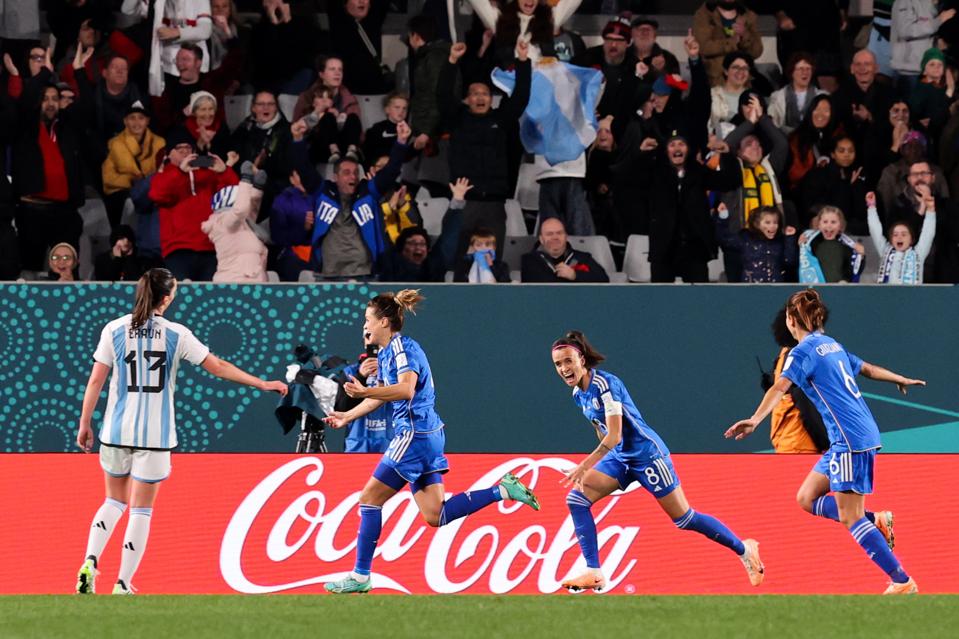The 2023 Women’s World Cup has delivered amazing matches, exciting goals, thrilling upsets, and record-breaking spectatorship through the first week and a half of play. With a few matches left to complete the group stage of the tournament, attendance and viewership numbers continue to break records. As a result, these numbers are leading to high levels of exposure for not only the 30 FIFA World Cup sponsors, but the record number of businesses who have purchased media/social media advertisement time/space throughout the tournament.
FIFA officials reported that attendance had totaled nearly 550,000 fans through 21 matches, leading to an adjusted overall tournament estimate of 1.6 million total tickets being sold throughout the World Cup. To put these numbers into perspective, 2023 ticket sale totals have easily surpassed both the 2019 Women’s World Cup in France (1.1-1.2 million total tickets sold) as well as the 2015 Women’s World Cup in Canada (1.3-1.4 million total tickets sold), with nearly three and a half weeks of matches remaining.
While we await the final total television and streaming viewership numbers when the tournament concludes with the championship match on August 20th, group stage viewership has already shown a steady increase from 2019. Some highlights to this point in the tournament are the 9 million viewers who tuned in for Colombia’s opening match against Korea Republic, the roughly 14 million combined viewers who watched the United States take on Vietnam and The Netherlands, as well as the 2.3 million who tuned in for Australia’s opening match against Ireland.
Sponsors Reap Benefits
The soaring viewership and attendance numbers also mean that tournament sponsors across the world are getting their money’s worth. According to Caroline Fitzgerald, founder of the women’s sport marketing and sponsorship agency GOALS, “For brands that have sponsored the Women’s World Cup, what they are likely going to see is that it is actually better business to invest in women’s sports than men’s. There is new data coming out all the time that shows sponsors of women’s sports see greater returns on their investments than sponsors of men’s sports.”
The recent data is highly compelling, and sponsors can expect great returns based on these high levels of spectatorship during the tournament so far. According to the Office for Women in Sport and Recreation in Victoria Australia, women’s elite sport outperforms men’s when it comes to factors such as (1) brand awareness, (2) brand consideration, and (3) customer conversion. Perhaps even more importantly, in their recent market research report, it was determined that for every $1 corporate sponsors invest into women’s elite sport, on average they will realize $7.29 customer value in return.
The data also shows that consumers are paying attention to the brands that are partnering with the Women’s World Cup. According to Nielsen’s 2023 FIFA Women’s World Cup Essential Data Hub report, roughly 55% of consumers felt that a business becoming a partner of the Women’s World Cup makes that brand much more interesting and/or appealing to them. Add to this the fact that women athletes and teams tend to draw higher rates of engagement from their followers across social media platforms, and the return on investment for brands becomes even more compelling long-term.
While the 2023 Women’s World Cup spectatorship and sponsorship outcomes might be just another building block toward overall equitable investment practices across sport, additional shifts in brand partnerships will undoubtedly continue. This would not surprise Fitzgerald, who said, “I think that after this World Cup we are not only going to see more brands invest in women’s sports, but we are actually going to see brands shifting dollars away from men’s sports and into the women’s game.”

